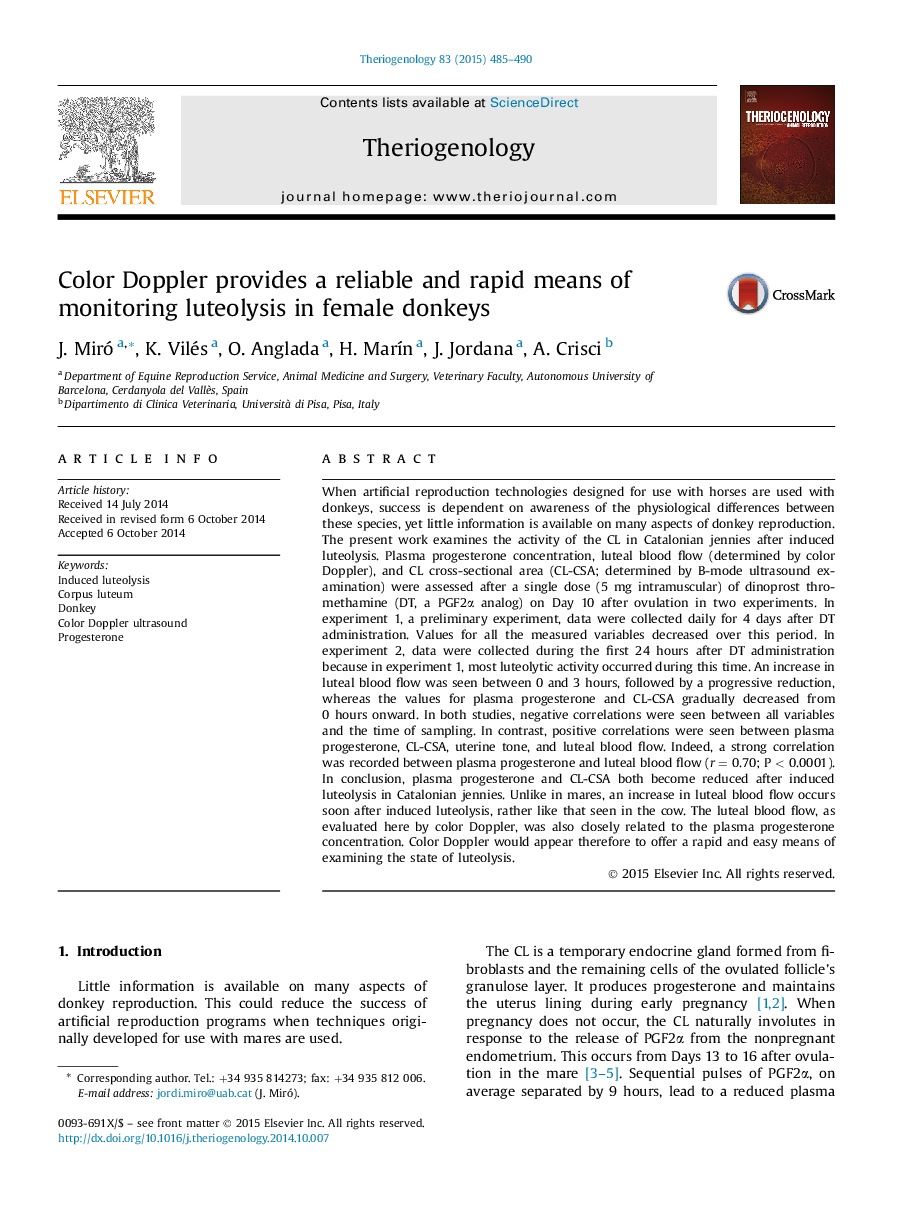| Article ID | Journal | Published Year | Pages | File Type |
|---|---|---|---|---|
| 10891970 | Theriogenology | 2015 | 6 Pages |
Abstract
When artificial reproduction technologies designed for use with horses are used with donkeys, success is dependent on awareness of the physiological differences between these species, yet little information is available on many aspects of donkey reproduction. The present work examines the activity of the CL in Catalonian jennies after induced luteolysis. Plasma progesterone concentration, luteal blood flow (determined by color Doppler), and CL cross-sectional area (CL-CSA; determined by B-mode ultrasound examination) were assessed after a single dose (5 mg intramuscular) of dinoprost thromethamine (DT, a PGF2α analog) on Day 10 after ovulation in two experiments. In experiment 1, a preliminary experiment, data were collected daily for 4 days after DT administration. Values for all the measured variables decreased over this period. In experiment 2, data were collected during the first 24 hours after DT administration because in experiment 1, most luteolytic activity occurred during this time. An increase in luteal blood flow was seen between 0 and 3 hours, followed by a progressive reduction, whereas the values for plasma progesterone and CL-CSA gradually decreased from 0 hours onward. In both studies, negative correlations were seen between all variables and the time of sampling. In contrast, positive correlations were seen between plasma progesterone, CL-CSA, uterine tone, and luteal blood flow. Indeed, a strong correlation was recorded between plasma progesterone and luteal blood flow (r = 0.70; P < 0.0001). In conclusion, plasma progesterone and CL-CSA both become reduced after induced luteolysis in Catalonian jennies. Unlike in mares, an increase in luteal blood flow occurs soon after induced luteolysis, rather like that seen in the cow. The luteal blood flow, as evaluated here by color Doppler, was also closely related to the plasma progesterone concentration. Color Doppler would appear therefore to offer a rapid and easy means of examining the state of luteolysis.
Related Topics
Life Sciences
Agricultural and Biological Sciences
Animal Science and Zoology
Authors
J. Miró, K. Vilés, O. Anglada, H. MarÃn, J. Jordana, A. Crisci,
